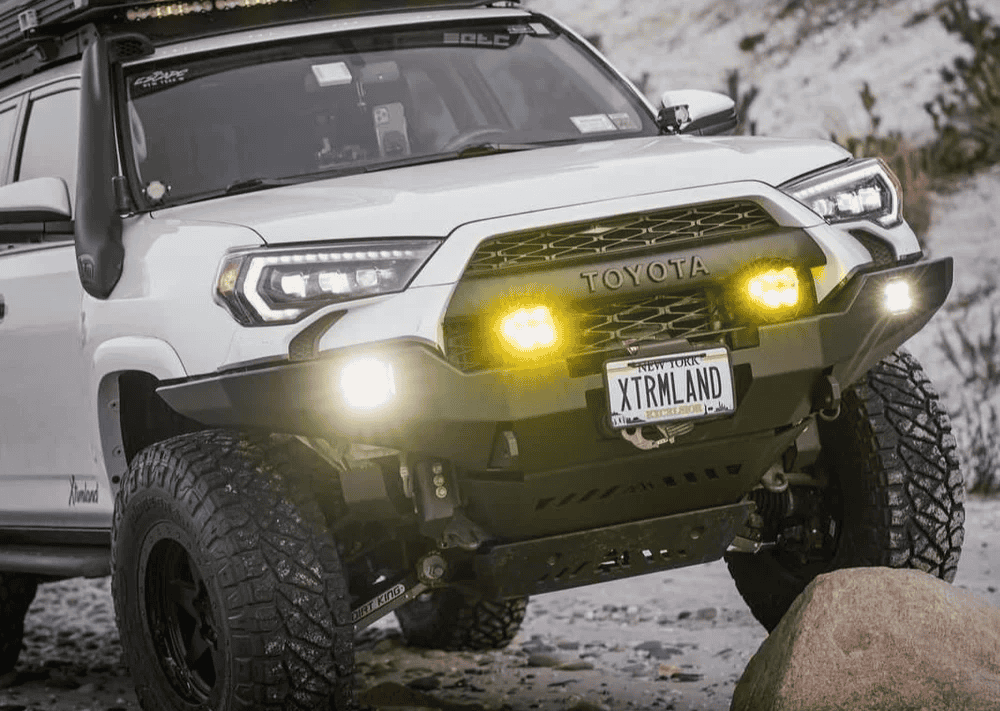Overland Vehicles

A search and rescue overland rig is a rolling basecamp, command node, and recovery tool in one package. It must move crews and equipment into rough country, operate off grid for extended windows, and return safely with the patient. Capability starts with a balanced platform choice. Trucks and SUVs bring approach and departure angles, frame mounted recovery points, and strong payload ratings. All wheel drive vans offer interior volume for command stations, K9 kennels, stretchers, and climate controlled medical storage. The right answer depends on mission type, crew size, and terrain.
Reliability and redundancy steer every decision. Mechanical four wheel drive with low range, locking differentials or selectable traction modes, and all terrain tires sized for the load keep the rig moving. A full size spare, tire repair kit, and onboard air are non negotiable. Skid plates, rock rails, and higher clearance help protect the underbody. Winch sizing should match gross vehicle weight with a comfortable safety margin, paired with soft shackles, tree savers, and a snatch block to manage angles.
Extended range matters. Larger fuel capacity, or a carefully secured fuel reserve, expands the operational envelope. Electrical capacity is equally important. A dual battery system with smart isolators, a high output alternator, and an inverter power radios, scene lighting, laptops, and medical devices without risking a no start scenario.
Communications and navigation define effectiveness when visibility drops and timelines compress. The rig should integrate mobile VHF and UHF, scan conventional and digital channels used by local agencies, and tie into repeater networks. A dedicated antenna system with proper grounding and cable runs preserves clarity. Satellite messaging and voice add a safety net when line of sight fails, while APRS or asset trackers help the team monitor movement in real time. Navigation tools include offline topographic maps, GIS layers for land ownership and hazards, and a dash mounted unit mirrored to a tablet for the navigator.
Choose a chassis that supports payload after upfit. Weigh your equipment list and keep at least a twenty percent margin under the manufacturer gross rating. Suspension upgrades should improve control and stance without over springing the rig. Dampers rated for washboard and variable loads reduce fatigue and help protect gear. Braking and cooling system health is vital for mountain work and slow technical climbs.
Build around a fused, labeled 12 volt distribution panel that is easy to service. Lithium house batteries save weight and deliver stable voltage, but they need proper enclosures and thermal management. Solar can extend autonomy but should not be the only charging source. Prioritize scene lighting with adjustable flood patterns, amber backlighting for dust and snow, and low glare work lights at the tailgate or rear doors. Keep high draw lighting on relays and use shielded cable runs to reduce radio interference.
Mount radios where operators can see and reach controls with gloves on. External speakers help over engine noise or wind. Program channel plans with naming conventions aligned to local incident command practices. For navigation, pair a solid state GPS puck with offline maps and preplanned routes. Preload common trailheads, water access points, and helispots. A paper map set and compass live in the rig as a final backup.
An effective layout follows the flow of a call. The driver and team lead need immediate access to reference binders, radios, and the map tablet. Patients and med kits require a clean, reachable zone with lighting that preserves night vision. Stretcher mounts or fold away platforms prevent loose loads. Oxygen, AED, trauma supplies, and hypothermia gear ride in padded cases with color coded labels. K9 hardware and scent articles sit in a dedicated cubby to avoid contamination.
Recovery gear deserves a quick pull system. Store winch line extensions, recovery rings, and protective gear in a weatherproof case near the rear. Shovels, traction boards, and a compact jack mount on exterior racks or a bed system to free interior space. Water is heavy, so lock it low and central. A minimum of ten gallons supports crew hydration and basic decon. Add a heated line or insulated storage if you work in freeze prone climates. In hot regions, ventilation fans and reflective window covers protect both crew and patient.
Safety and visibility tie the package together. Reflective chevrons, scene cones, and a rear facing amber light bar improve roadside safety. Audible devices and sirens depend on jurisdiction and must comply with local regulations. Fire suppression includes a mounted extinguisher in the cab and another at the rear door. A simple whiteboard or tablet board helps track tasks, times, and team locations under incident command.
Turning a spec into a dependable rig takes clean wiring, load tested mounts, and field informed layouts. Teams often start with chassis selection and a staged upfit plan that protects payload and reliability. If your mission points toward a van based command platform or a short wheelbase truck for tight timber, a professional upfit brings the details together without guesswork. Explore our overland rigs to see how platforms can be configured for remote response, long stays, and rough access. When you are ready to define radios, power, storage, and lighting around your team’s workflow, our custom overland upfit process aligns equipment with real field needs.
Your community depends on gear that works every time. OZK Customs builds complete search and rescue packages or focused upgrades that add range, communications, storage, and safety without compromising drivability. Walk through options, timelines, and budgets, then validate the setup at our Fayetteville shop before you roll out. Learn what sets our team and process apart at why choose OZK Customs and start mapping your mission ready build today.
Ready to configure a field proven SAR platform. Submit the form with your mission profile, terrain, crew size, and gear list. OZK will map a build plan, timeline, and budget that turns requirements into a dependable rig built for real world rescues.
ADDRESS:
6159 E Huntsville Rd, Fayetteville, AR 72701
PHONE:
(479) 326-9200
EMAIL:
info@ozkvans.com